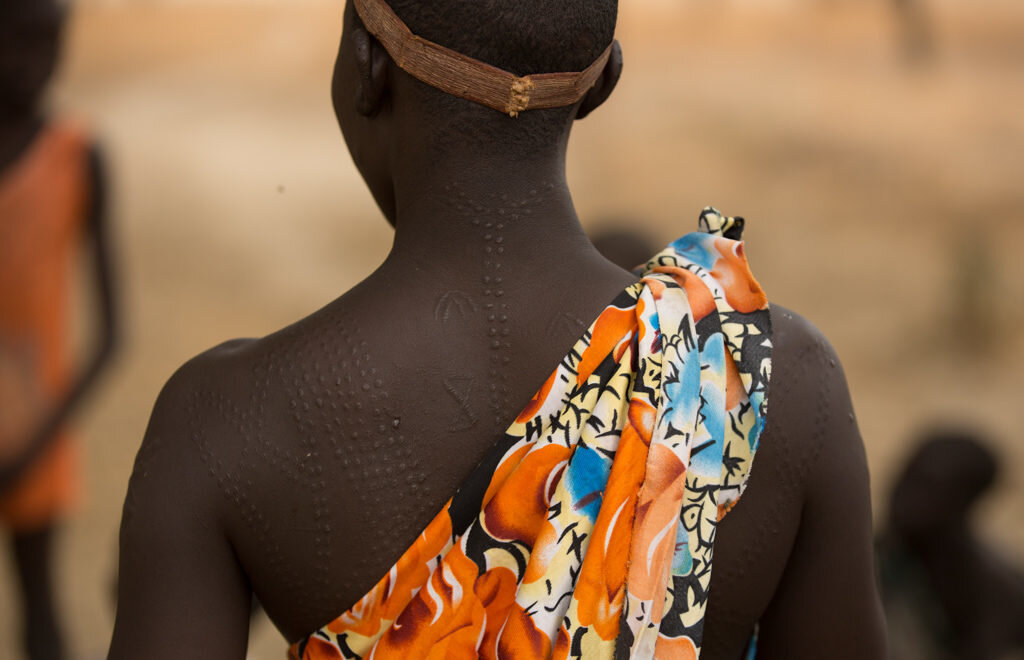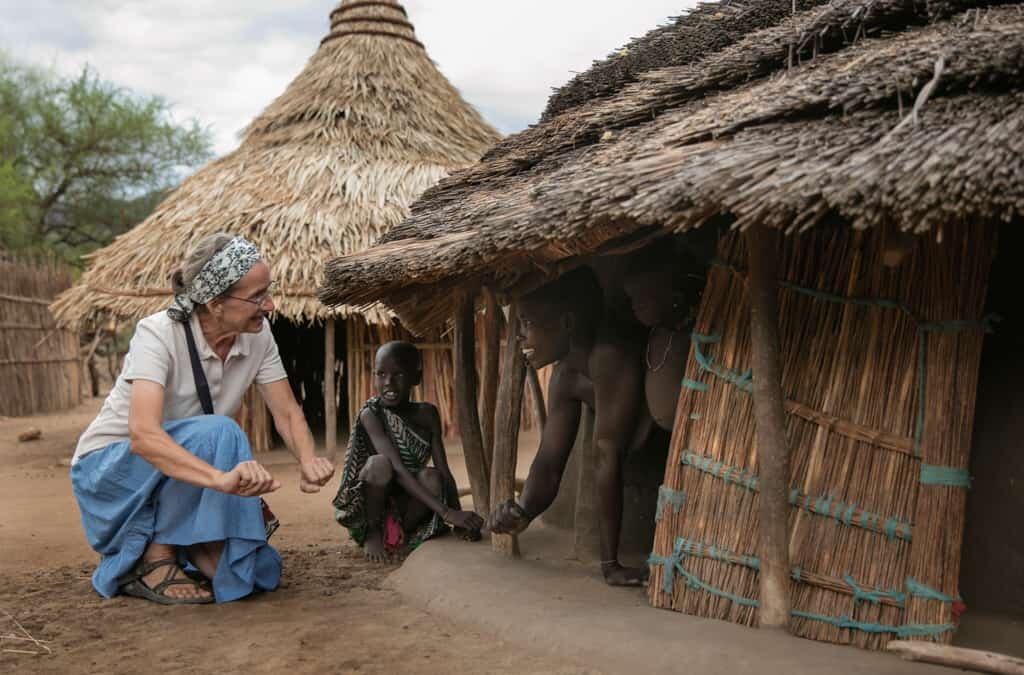Among the Laarim
An Unreached People who Waited
by Heidi Thulin, photography by Jason Ransom
The Laarim are one of the smallest tribes in South Sudan with a population of about 10-15,000 people. They live in the remote Boya Hills, a ridge of mountains in the Eastern Equatoria, in a place called Kimatong.
A Laarim family, consisting of a man, his wives, and their children, is immensely proud of their cattle, sheep, and goats. They also farm sorghum, sesame, maize, and ground nuts (peanuts), but this is second in priority to the well-being of their herds. They eat local—whatever is growing around them and whatever they can find. From a young age, they are taught to identify every weed and plant and tree and know which parts are edible. Young boys also study the anthills, looking for honeybee deposits, and dig for the sweet substance with their hands or sticks.
Young boys explore and scavenge for food while they tend their family's herds.
A desert rose blooms during the dry season.
Traditionally, the Laarim believe in one God, a Creator of all things. They rely heavily on their natural surroundings, and their idea of Tammu (“God” or “rain”) is closely associated with the things they need to survive. God is a being to be feared exclusively, not one to be known or understood. Cattle are also elevated to the point of worship. Whenever a bull is slaughtered, the Laarim hold a great ceremony, and it is believed that one can receive blessing from drinking the blood and covering the body with the contents of the stomach. Patterns in the intestines can predict a successful cattle raid or the coming of the rains.
A Laarim woman is considered more attractive if she has decorated her body with tattoos. They are made with either a razor (eka rua) or a needle (lodingoti), and women are proud to show off their designs.
The Laarim tend cattle, sheep, and goats. "They are so proud of their animals," the outreach team explains, "and the kids make likenesses from the termite mound dirt. They are very good replicas of the animals with exaggerated 'pride points,' like the horns and the cow humps.”
A child eats a palm fruit. During the dry season, this fibrous food is the main sustenance for the Laarim.
Since the early 1950s, because their location is far from the beaten track and the area is not connected to communication channels, the Laarim have felt neglected by missionaries. The added complications of the ongoing civil war make Kimatong a very difficult place to reach.
All the neighboring tribes have the Word of God. Why has it not come to us?
Village Elders
Africa Inland Mission Heard Their Cry
The Gospel of Luke has been translated into the Laarim language.
At the beginning of 2016, an outreach team started trickling into the waiting Boya Hills. With the help of AIM AIR, the team brought in housing supplies and food, solar power and the gospel of Luke. Every Sunday, they hold church services under the sparse shade of an acacia tree. They ride motorbikes to nearby villages to greet their neighbors, practice their new language, and show the love of Christ to the Laarim.
They dream of a day when the Boya Hills will be filled with songs of God’s praise.
Andrew works with the Laarim to create cultural songs that tell the stories of the Bible.













